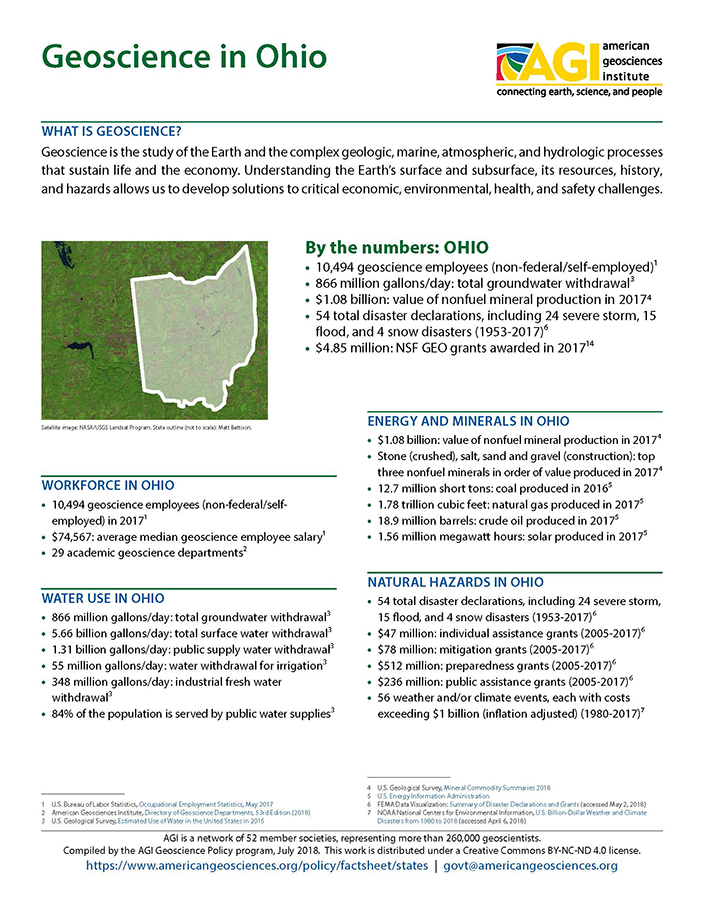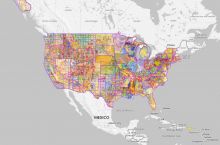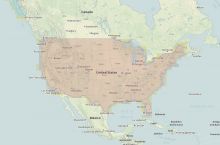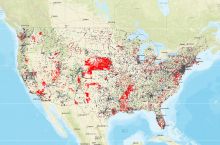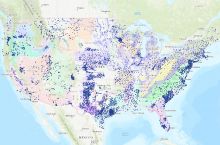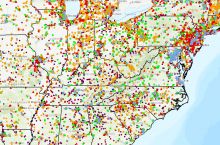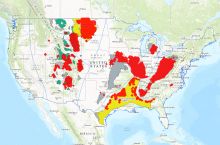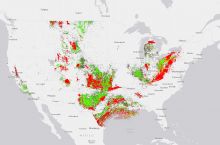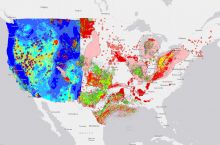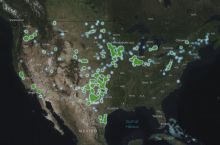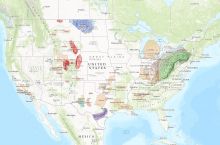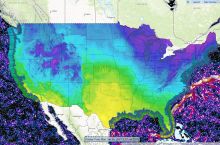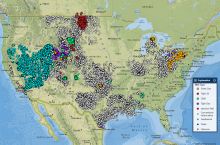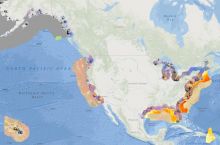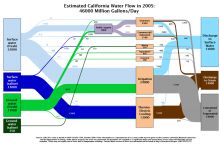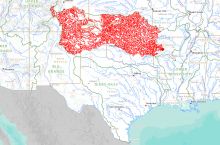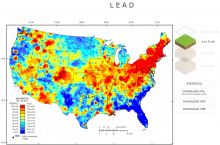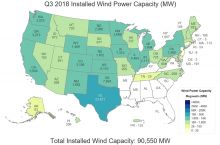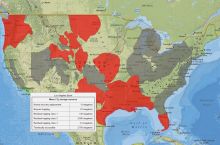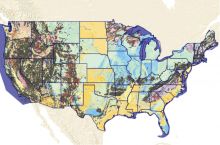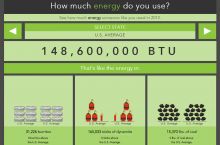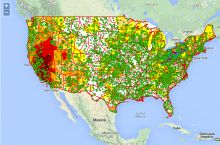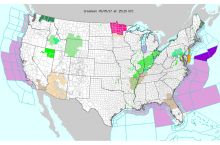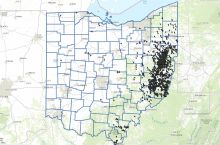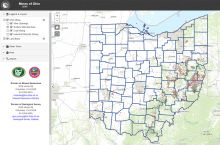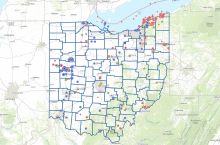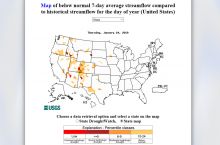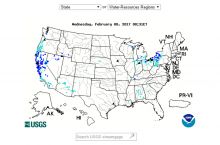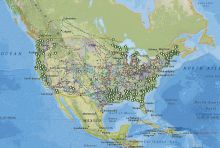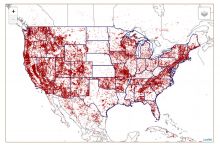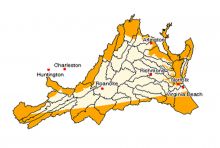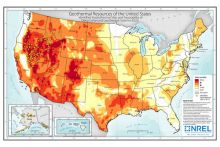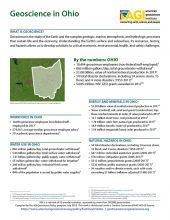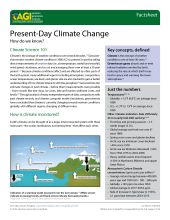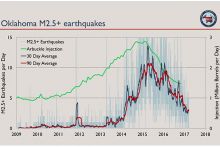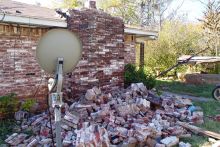By the numbers: Ohio
- 10,494 geoscience employees (excludes self-employed)1
- 866 million gallons/day: total groundwater withdrawal3
- $1.08 billion: value of nonfuel mineral production in 20174
- 54 total disaster declarations, including 24 severe storm, 15 flood, and 4 snow disasters (1953-2017)6
- $4.85 million: NSF GEO grants awarded in 201714...
Agencies Working on Geoscience Issues in ohio
The mission of the division is to provide for the safe and environmentally sound development and restoration of mineral and fossil fuel extraction sites. Diverse and comprehensive programs address the environmental and safety aspects of the coal and mineral mining industries while maintaining high standards of regulatory effectiveness. The division also restores abandoned mine land, enforces mining safety laws, and ensures the protection of citizens, land and water resources. Program and support services include permitting, bonding, inspection, enforcement, mine safety rescue support and training, hydrology, soils, blasting, archaeology, engineering, design, information technology and administrative support. Expertise is provided by an experienced staff of inspectors, geologists, environmental specialists, engineers, blasting specialists, soils scientists, hydrologists, archaeologists, and hydrogeologists.
The Division's responsibilities include regulation of Ohio's oil and gas drilling, production, brine disposal, solution mining, and underground injection operations. Staff inspects the drilling, restoration, and plugging of all oil and gas wells in the state.
The Division of Water Resources (DWR) was statutorily created from the former Division of Soil and Water Resources on January 1, 2016, in accordance with Amended Substitute House Bill Number 64 of the 131st General Assembly. The Division's office is located in Columbus. Responsibilities include dam and levee maintenence, flood safety, ground water use and storage, and water data collection.
The primary mission of the Ohio Emergency Management Agency is to coordinate activities to mitigate, prepare for, respond to and recover from disasters.
The Ohio Environmental Protection Agency is a trusted leader and environmental steward using innovation, quality service and public involvement to ensure a safe and healthy environment for all Ohioans. Ohio EPA's goal is to protect the environment and public health by ensuring compliance with environmental laws and demonstrating leadership in environmental stewardship.
The mission of the Ohio Geological Survey is to provide geologic information and services needed for responsible management of Ohio's natural resources.

